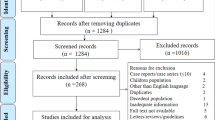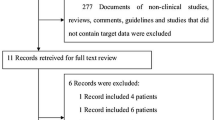Abstract
Coronavirus disease (COVID-19) is highly transmissible between human beings. We examined differences in the core families with COVID-19 severity and mortality and comorbidities between Arab and Jews and explored the factors associated with COVID-19 severity and mortality to find a genetic component. A cross-sectional study was conducted among 2240 COVID-19 patients (> 18 years of age) randomly selected by online panels and questionnaires in the native language (Hebrew or Arabic) during March 2021–June 2022. Multivariable linear regression models were used to assess correlations with COVID-19 disease severity and mortality. Overall, 1549 (69%) were Arabs and 691 (31%) were Jews. The proportion of participants who died from COVID-19 was higher among Arabs compared with Jews (66% vs. 59%), P < 0.001. The mean number of deaths from COVID-19 and patients with severe COVID-19 was higher in ultra-Orthodox Jewish, non-academic core families and those who lived in the city residence compared with secular, academic core families and who live in the village residence, P < 0.001. A multivariable linear regression model showed a significant association between metabolic, kidney, cardiovascular, and respiratory diseases with COVID-19 severity (B coefficient − 0.43, B coefficient − 0.53, B coefficient − 0.53, B coefficient − 0.42, respectively) and COVID-19 mortality (B coefficient − 0.51, B coefficient − 0.64, B coefficient − 0.67, B coefficient − 0.34, respectively), P < 0.001. COVID-19 severity and mortality were highly associated with comorbidities, ethnicity, social and environmental factors. Furthermore, we believe that genetic factors also contribute to the increase in COVID-19 severity and mortality and the differences rates of these between Arabs and Jews in Israel.

Similar content being viewed by others
Data availability
Individual-level data cannot be publicly available due to legal and ethical restrictions. Aggregative data will be provided upon a reasonable request to the corresponding author.
References
Hoffmann M, Kleine-Weber H, Schroeder S, et al. SARS-CoV-2 cell entry depends on ACE2 and TMPRSS2 and is blocked by a clinically proven protease inhibitor. Cell. 2020;181:271–80. https://doi.org/10.1016/j.cell.2020.02.052.
Li Q, Guan X, Wu P, et al. Early transmission dynamics in Wuhan, China, of novel coronavirus-infected pneumonia. N Engl J Med. 2020;382:1199–207.
Yu P, Zhu J, Zhang Z, Han Y. A familial cluster of infection associated with the 2019 novel coronavirus indicating possible person-to-person transmission during the incubation period. J Infect Dis. 2020;221:1757–61.
Chan JFW, Kok KH, Zhu Z, et al. Genomic characterization of the 2019 novel human-pathogenic coronavirus isolated from a patient with atypical pneumonia after visiting Wuhan. Emerg Microbes Infec. 2020;9:221–36. https://doi.org/10.1080/22221751.2020.1719902.
Ioannidis JPA, Axfors C, Contopoulos-Ioannidis DG. Population-level COVID-19 mortality risk for non-elderly individuals overall and for non-elderly individuals without underlying diseases in pandemic epicenters. Environ Res. 2020;188:109890. https://doi.org/10.1016/j.envres.2020.109890.
O’Hearn M, Liu JX, Cudhea F, Micha R, Mozaffarian D. Coronavirus Disease 2019 hospitalizations attributable to cardiometabolic conditions in the United States: a comparative risk assessment analysis. J Am Heart Assoc. 2021;10:e019259. https://doi.org/10.1161/JAHA.120.019259.
Gebhard C, Regitz-Zagrosek V, Neuhauser HK, Morgan R, Klein SL. Impact of sex and gender on COVID-19 outcomes in Europe. Biol Sex Differ. 2020;11:29. https://doi.org/10.1186/s13293-020-00304-9.
Docherty AB, Harrison EM, Green CA, et al. Features of 20 133 UK patients in hospital with covid-19 using the ISARIC WHO clinical characterisation protocol: prospective observational cohort study. BMJ. 2020;369:m1985. https://doi.org/10.1136/bmj.m1985.
Israel TCBoSi. Available from: https://www.cbs.gov.il/en/Pages/default.aspx.
Knesset OwotI. Covid-19 disease in the Arab population in Israel. Available from: https://fs.knesset.gov.il/globaldocs/MMM/ec77910d-2dac-eb11-8111-00155d0aee38/2_ec77910d-2dac-eb11-8111-00155d0aee38_11_17972.pdf.
Knesset OwotIp. Covid-19 disease database of Israeli Ministry of Health. Available from: http://fs.knesset.gov.il/24/committees/24csbg602911.pdf.
Chan KL, Chen M. Effects of social media and mobile health apps on pregnancy care: meta-analysis. JMIR Mhealth Uhealth. 2019;7:e11836.
Clarfield AM, Manor O, Nun GB, et al. Health and health care in Israel: an introduction. Lancet. 2017;389:2503–13.
Muhsen K, Na’aminh W, Lapidot Y, Goren S, Amir Y, Perlman S, Green MS, Chodick G, Cohen D. A nationwide analysis of population group differences in the COVID-19 epidemic in Israel, February 2020–February 2021. Lancet Reg Health Eur. 2021;7:100130. https://doi.org/10.1016/j.lanepe.2021.100130.
Xing K, Tu XY, Liu M, et al. Efficacy and safety of COVID-19 vaccines: a systematic review. Zhongguo Dang Dai Er Ke Za Zhi. 2021;23:221–8.
Guidance WHOI. Home care for patients with suspected or confirmed COVID-19 and management of their contacts. In: WHO reference number: WHO/2019-nCoV/IPC/HomeCare/2020.4.
Pokharel S, Acharya S, Chowdhury ATMM. Genes associated with metabolic syndrome and hyperuricemia: an overview. Clin Case Rep Rev. 2015;1:143–8. https://doi.org/10.15761/CCRR.1000147.
Milewicz DM, Seidman CE. Genetics of cardiovascular disease. Circulation. 2000;102:103–11.
Elborn JS. Cystic fibrosis. Lancet. 2016;388:2519–31.
Ntontsi P, Photiades A, Zervas E, Xanthou G, Samitas K. Genetics and epigenetics in asthma. Int J Mol Sci. 2021;22:2412. https://doi.org/10.3390/ijms22052412.
Normanno N, Cree IA. Genomics driven-oncology: challenges and perspectives. BMC Cancer. 2015;15:141. https://doi.org/10.1186/s12885-015-1147-7.
Ford D, Easton DF. The genetics of breast and ovarian-cancer. Brit J Cancer. 1995;72:805–12.
Koren R. Vitamin D receptor defects: the story of hereditary resistance to vitamin D. Pediatr Endocrinol Rev. 2006;3:470–5.
Sookoian S, Pirola CJ. Genetics of nonalcoholic fatty liver disease: from pathogenesis to therapeutics. Semin Liver Dis. 2019;39:124–40.
George-Jr AL, Neilson EG. Genetics of kidney disease. Am J Kidney Dis. 2000;35:S160–9.
Hu J, Li C, Wang S, Li T, Zhang H. Genetic variants are identified to increase risk of COVID-19 related mortality from UK Biobank data. Hum Genomics. 2021;15(1):10. https://doi.org/10.1186/s40246-021-00306-7.
Anastassopoulou C, Gkizarioti Z, Patrinos GP, Tsakris A. Human genetic factors associated with susceptibility to SARS-CoV-2 infection and COVID-19 disease severity. Hum Genomics. 2020;14(1):40. https://doi.org/10.1186/s40246-020-00290-4.
Francula-Zaninovic S, Nola IA. Management of measurable variable cardiovascular disease risk factors. Curr Cardiol Rev. 2018;14:153–63.
Menon V, Gul A, Sarnak MJ. Cardiovascular risk factors in chronic kidney disease. Kidney Int. 2005;68:1413–8.
Galvin JR, Franks TJ. Smoking-related lung disease. J Thorac Imaging. 2009;24:274–84.
Abu Tailakh M, Poupko L, Kayyal N, et al. Liver cirrhosis, etiology and clinical characteristics disparities among minority population. J Immigr Minor Healt. 2022;24:1122–8.
Neumark YD, Rahav G, Teichman M, Hasin D. Alcohol drinking patterns among Jewish and Arab men and women in Israel. J Stud Alcohol. 2001;62:443–7.
Mukamel MN, Weisman Y, Somech R, et al. Vitamin D deficiency and insufficiency in Orthodox and non-Orthodox Jewish mothers in Israel. Isr Med Assoc J. 2001;3:419–21.
Oren Y, Shapira Y, Agmon-Levin N, et al. Vitamin D insufficiency in a sunny environment: a demographic and seasonal analysis. Isr Med Assoc J. 2010;12:751–6.
Health OwoIMo. The incidence and mortality rate of cancer in Israel in 2019. Available from: https://www.health.gov.il/PublicationsFiles/ICR_2022.pdf.
Funding
The authors declare that no funds, grants, or other support were received during the preparation of this manuscript.
Author information
Authors and Affiliations
Contributions
MT and AA did conceptualization. MT and WN done methodology. WN and MT performed formal analysis and investigation and writing—original draft preparation. All authors done writing—review, and editing.
Corresponding author
Ethics declarations
Competing interests
The authors have no relevant financial or non-financial interests to disclose.
Ethics approval
The study protocol was approved by the Institutional Review Board (IRB) at the Academic College of Tel Aviv-Yaffo (Protocol number 2021-1041); all procedures were performed in accordance with local guidelines and regulations.
Consent to participate
The participants were given a detailed explanation of the study in their native language (Arabic or Hebrew) and were asked by phone to provide an informed consent form.
Consent to publish
Not applicable.
Additional information
Publisher's Note
Springer Nature remains neutral with regard to jurisdictional claims in published maps and institutional affiliations.
Rights and permissions
Springer Nature or its licensor (e.g. a society or other partner) holds exclusive rights to this article under a publishing agreement with the author(s) or other rightsholder(s); author self-archiving of the accepted manuscript version of this article is solely governed by the terms of such publishing agreement and applicable law.
About this article
Cite this article
Tarabeih, M., Perelmutter, O., Kitay-Cohen, Y. et al. Associations of the COVID-19 burden and various comorbidities of different ethnic groups in Israel: a cross-sectional study. Clin Exp Med 23, 4891–4899 (2023). https://doi.org/10.1007/s10238-023-01172-4
Received:
Accepted:
Published:
Issue Date:
DOI: https://doi.org/10.1007/s10238-023-01172-4




